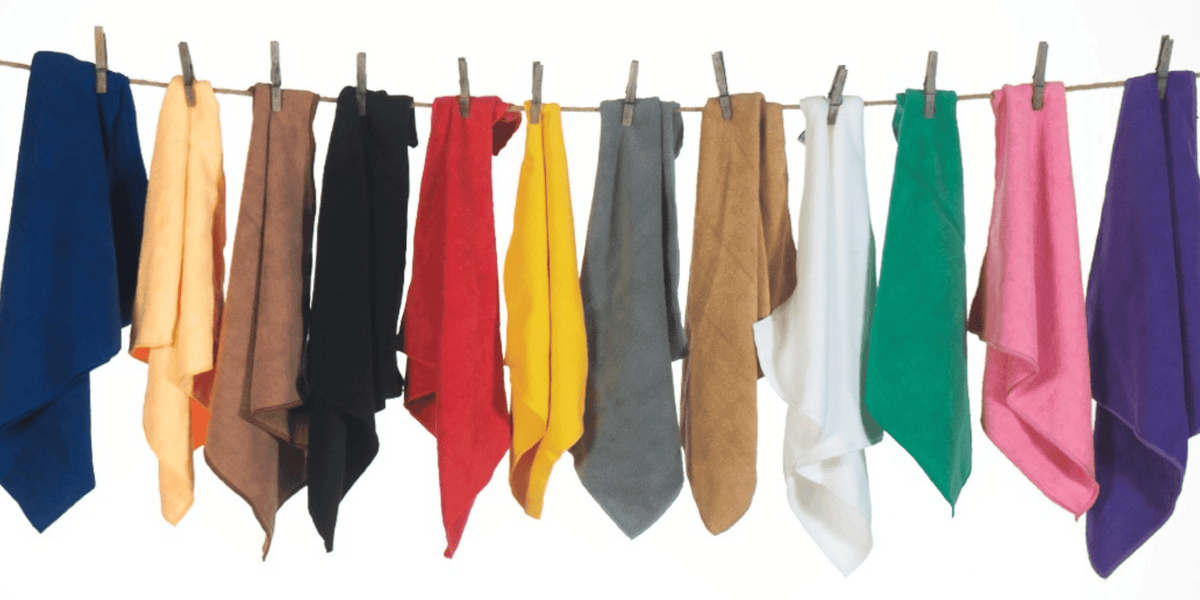
Lint-free microfibre cloths: Everything you need to know about lint-free cleaning
|
|
Time to read 4 min
|
|
Time to read 4 min
At some level, anyone can enjoy cleaning. Even if it really isn’t your favourite way to spend your time, there’s a certain universal satisfaction in seeing dirt and grime swiped away smoothly and without any residue. If, however, your cloth leaves lint on your freshly wiped surface, only to be replaced by fresh (or is it the same?) lint every time you aim for a perfectly clean surface, cleaning immediately becomes unsatisfying and more often than not, frustrating.
Lint refers to tiny pieces of fibres that break free from fabric materials during normal use, washing, and drying. As the fibres rub against each other, they may shed onto the surfaces they’re used on, leaving fuzz or dust that is especially visible on glass, mirrors, and glossy surfaces such as polished wood or electronics.
All natural fibres, including wool, cotton, linen, and silk, may eventually shed lint as the fibres break down with time. Synthetic fibres are a bit more complicated.
If it’s a Paragon Microfibre product, then yes, it’s lint-free. If it’s not a Paragon Microfibre product, then maybe…
Microfibre most commonly consists of a polyester and polyamide (nylon) blend. Extruded microfibres are woven or knitted into a fabric before being ‘split’ using a chemical treatment that breaks down the bonds between the polyester and polyamide. With heat and mechanical agitation, the fibres separate into individual filaments as thin as 1/300th the width of a human hair.
The process is technical, and there are shortcuts that save on manufacturing time and costs. When microfibre manufacturers make even small mistakes or cut corners, you end up with a product that works well a handful of times before coming apart. When you consistently rely on the highest quality materials, machinery, and processes, you get Paragon-quality microfibre products that remain lint-free for years, even with regular use.
| Fibre Type | Example | Risk of Linting | Details |
|---|---|---|---|
| Natural fibres | Wool, cotton, linen | High | All organic fibres break down, pile, and lint over time. |
| Low-quality synthetics | Cheap polyester blends. | Medium to high | Lower-cost manufacturing techniques lead to loose weaves, poor splitting, and linting. |
| High-quality synthetics | Split microfibre textiles with stitched (overlocked) edges | Low | Resistant to pilling and linting for up to several years, even with regular use. |
* It is important to note that all fabrics will remain in better condition for longer when properly taken care of. While under the same conditions high-quality synthetics typically hold up better to linting, product care will always be a determining factor.
Paragon Microfibre is the leading UK manufacturer and supplier of high-quality, ultra-absorbent, and always lint-free products for all cleaning jobs.
Lint is more than simply annoying—it’s a sign that your cloth is breaking down. While it doesn’t necessarily mean that the cloth immediately becomes useless, it does mean that it will lose absorbency, plushness, and cleaning power with time, alongside shedding unsightly lint.
All microfibre products, from the cheapest corner-store pack to microfibre cloths used in laboratories, are susceptible to heat, mechanical, and chemical damage. Avoid these types of harm to increase your microfibre products’ expected lint-free lifespan.
While the exact temperature at which the synthetic fibres deform may vary between different suppliers, as a general rule, avoid using microfibre cloths on any surface too hot to touch for more than a second or so. Wash all microfibre products at a low to medium temperature setting and only tumble dry at a low heat. Check your manufacturer’s specifications before purchasing. If it’s not specified, avoid going over 60°C.
Microfibre cloths don’t hold up well to rough surfaces, and should not be used on rough wood, concrete, rusty steel, or similarly abrasive surfaces. Doing so mechanically shreds the fibres, quickly leading to lint and less effective cleaning. When washing your microfibre products, make sure not to wash them with garments that feature Velcro; it can catch and shred the microfibres.
As a synthetic fibre product, microfibre cloths are very sensitive to specific chemicals. Bleach and solvents effectively break down the fibres, causing extreme linting and deterioration. To prevent chemical damage, always wash microfibre products using a mild detergent only; fabric conditioners and softeners may coat the fibres, reducing their absorbency and cleaning power. Avoid all products containing ammonia, acetone, or alcohol unless the cloths are specifically rated for industrial use. Finally, always clean and dry microfibre cloths after use to avoid grime, soap, or solvent buildup.
At Paragon Microfibre, we take cleaning seriously.
From around-the-home cleaning to commercial car detailing, hospitals, the office, and more, our clients trust us to consistently deliver the highest quality, ultra-absorbent, and lint-free microfibre cloths. Designed to last more than 500 machine wash cycles while remaining as fresh as day one, choose Paragon Microfibre for proven and effective lint-free cleaning.